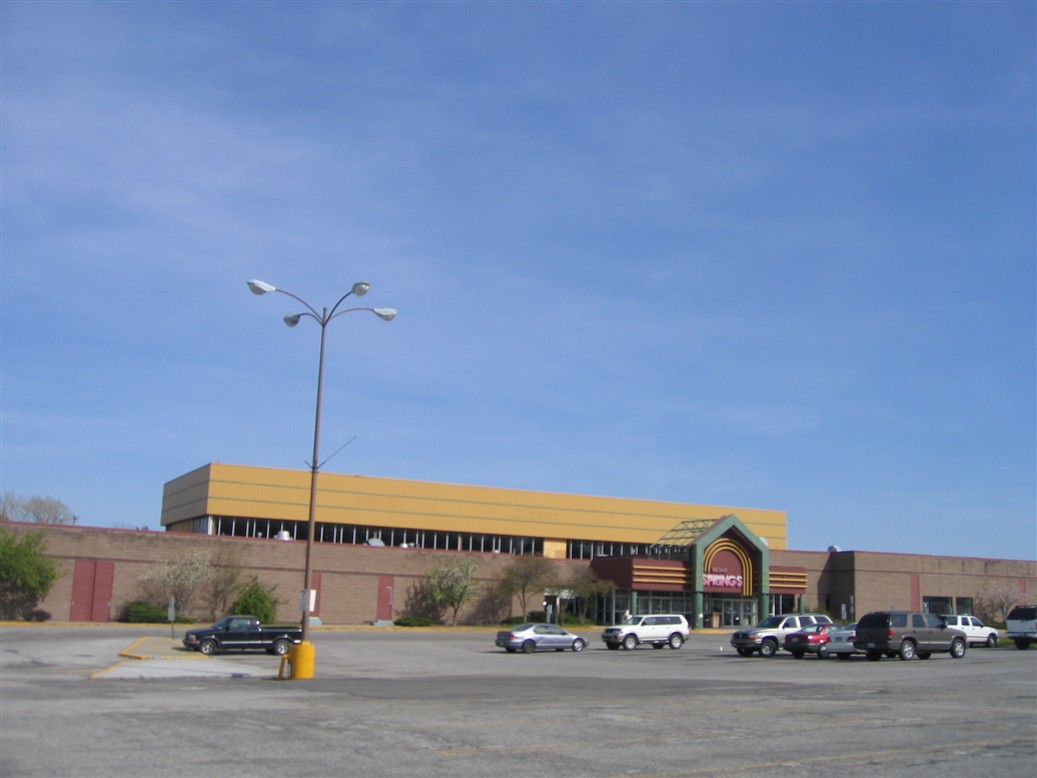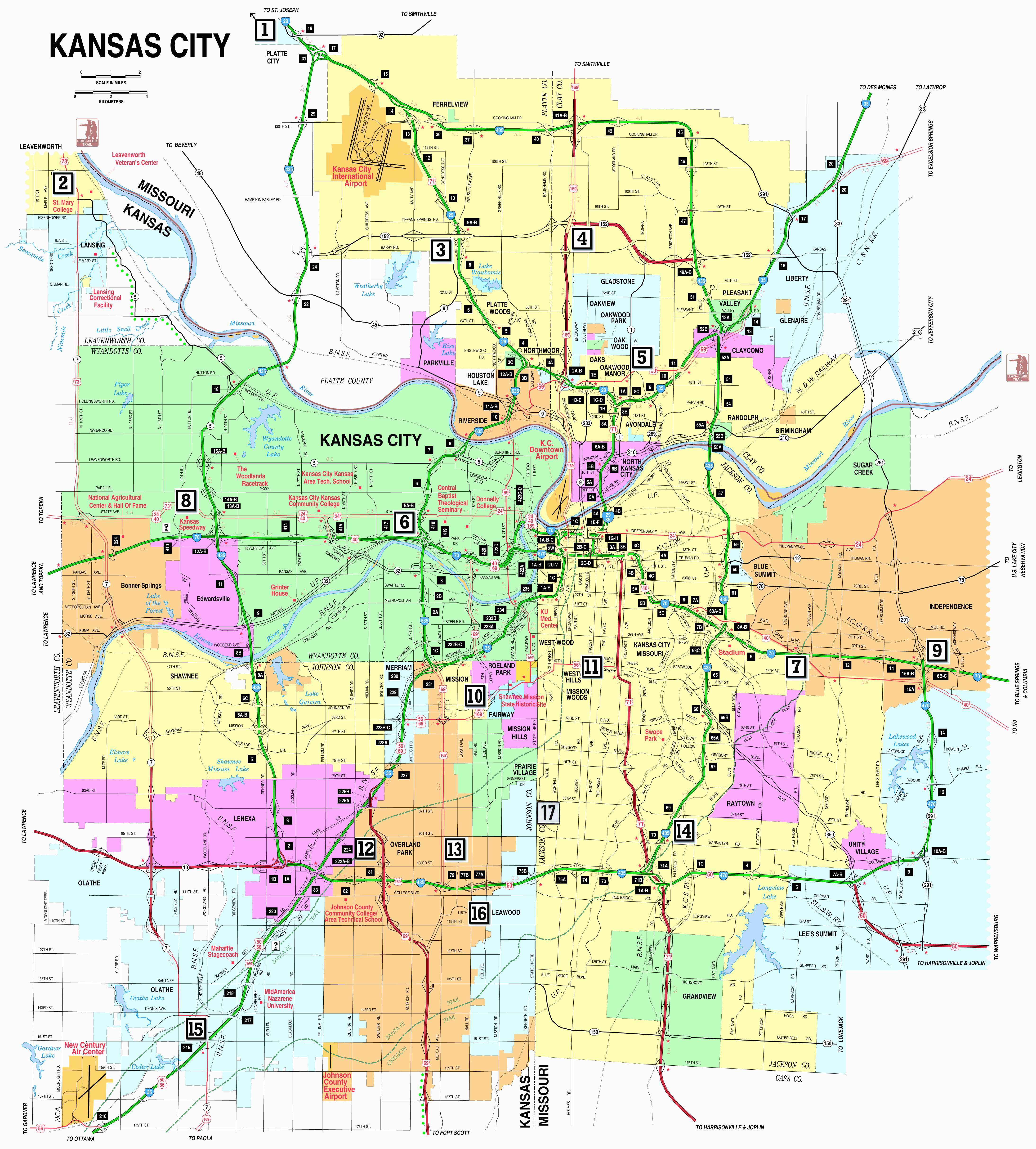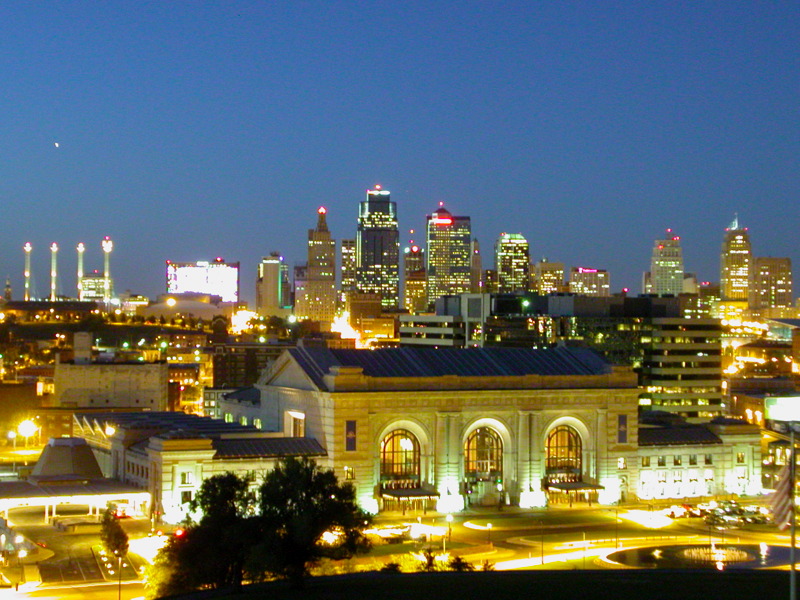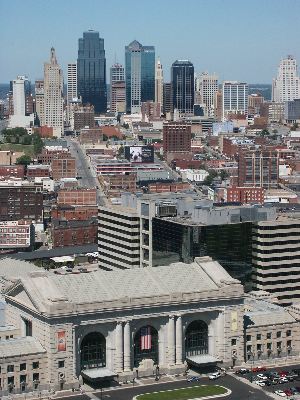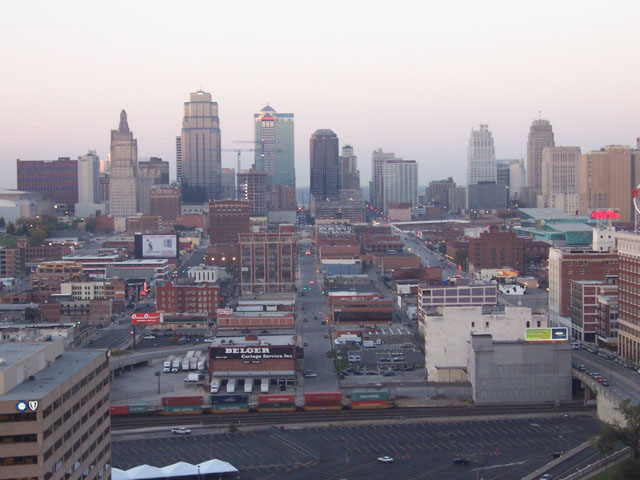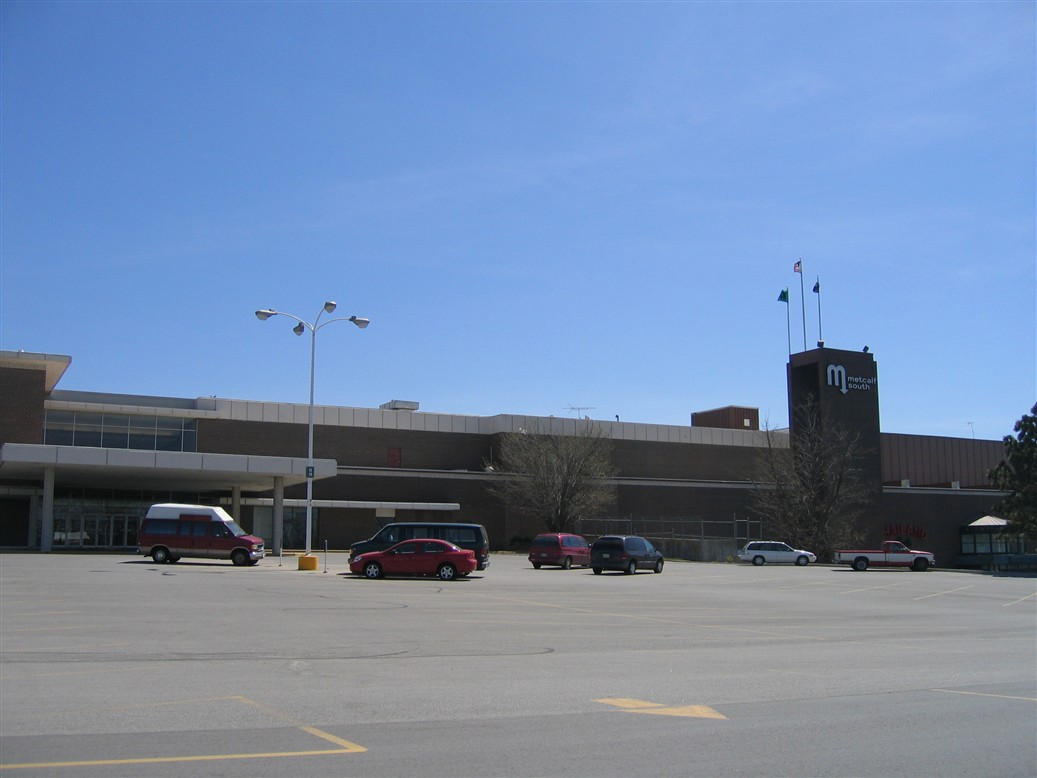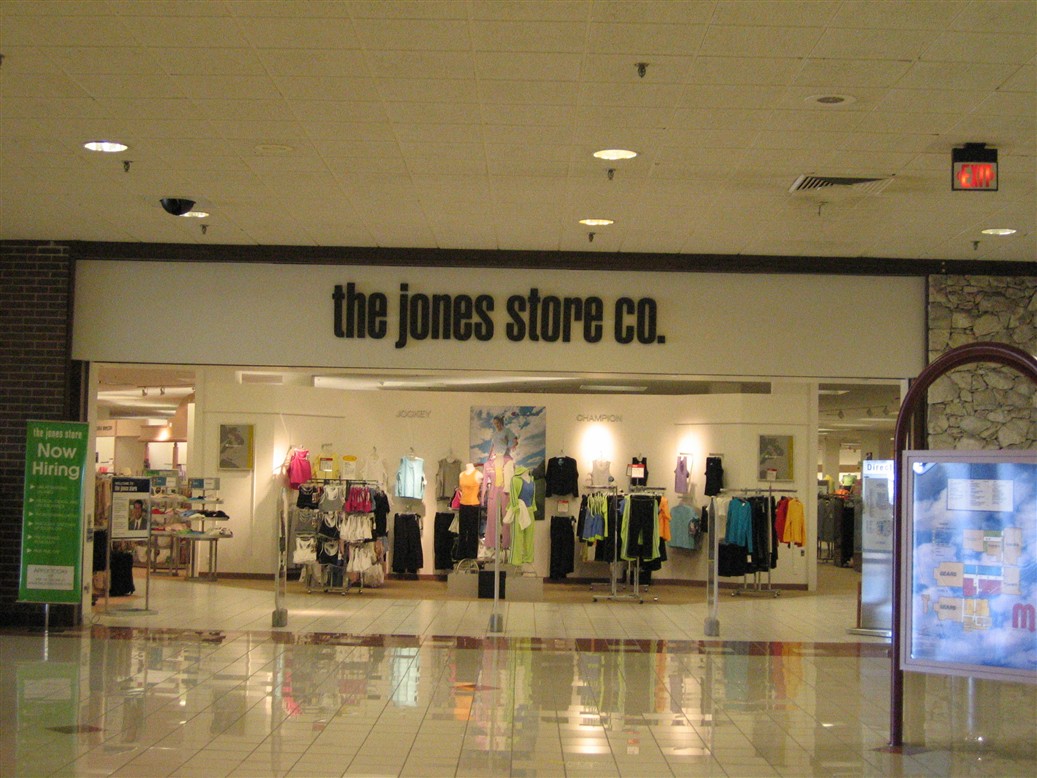Indian Springs Mall opened at the corner of State Road (U.S. 40) and I-635 on the west side of Kansas City, Kansas in 1971. The 700,000 square-foot mall looks pretty much exactly the same today as it did when it opened over 35 years ago, save for many stores which have come and gone and very minor decorating updates. Unfortunately, more stores have gone than have come, and today Indian Springs Mall’s days are numbered as redevelopment plans have picked up steam.
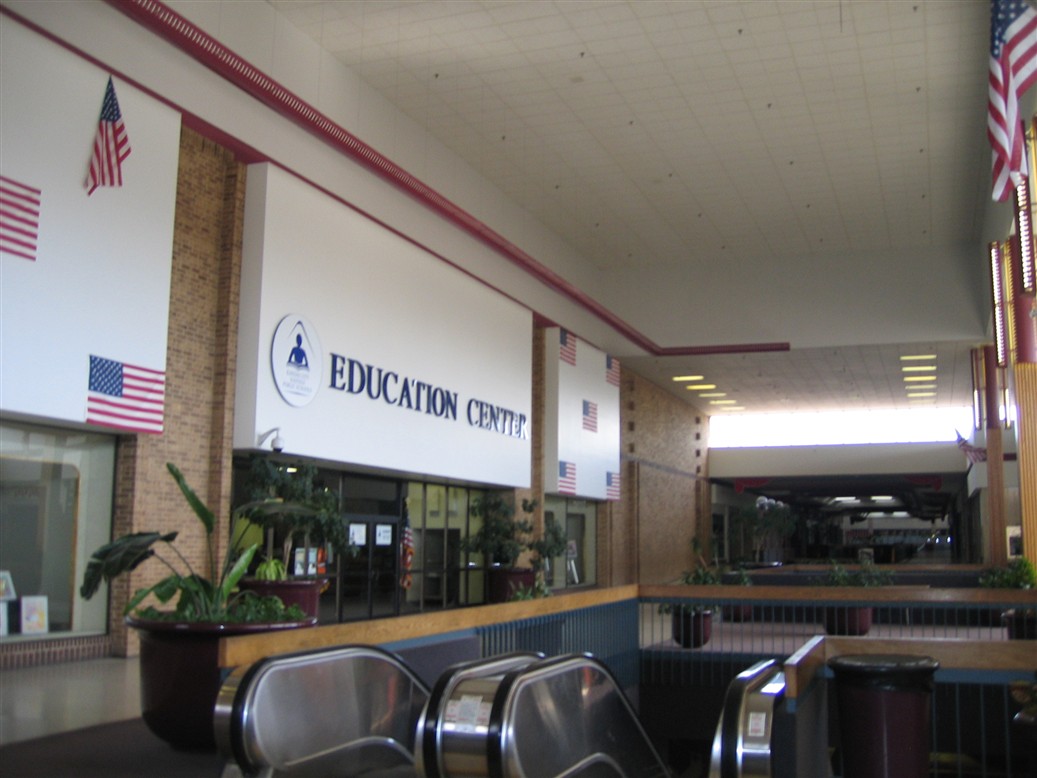 For dated retail architecture lovers, Indian Springs Mall is an amazing dream come true. The two-level enclosed mall stretched from Montgomery Ward in the north to Dillard’s on the south end, with a JCPenney in the middle. Impressive high ceilings with windows flank the JCPenney anchor in the middle of the mall which has a long frontage. The lower level of the mall only exists from JCPenney to Dillard’s and not from JCPenney to Montgomery Ward, and feels like a strangely dark subterranean world because it is only open to the upper level intermittently. Several retail fans like us have created a film documentary of the mall and the circumstances surrounding its condition, which is to be released in Spring 2007. You can even view a trailer at their website.
For dated retail architecture lovers, Indian Springs Mall is an amazing dream come true. The two-level enclosed mall stretched from Montgomery Ward in the north to Dillard’s on the south end, with a JCPenney in the middle. Impressive high ceilings with windows flank the JCPenney anchor in the middle of the mall which has a long frontage. The lower level of the mall only exists from JCPenney to Dillard’s and not from JCPenney to Montgomery Ward, and feels like a strangely dark subterranean world because it is only open to the upper level intermittently. Several retail fans like us have created a film documentary of the mall and the circumstances surrounding its condition, which is to be released in Spring 2007. You can even view a trailer at their website.
Today, with zero anchors and a hybridized focus, Indian Springs is most definitely a dead mall. It actually died as a traditional retail mall about a decade ago, but like many others it has carried on with other purposes. In 1997, Dillard’s closed, and JCPenney also closed. The last anchor to close was Montgomery Ward, which closed when the entire chain folded in 2001. As the anchors left, so too did many of the typical national retailers. The mall was then repurposed to focus on attracting a mostly Hispanic retail market, and remains with this focus today as about a dozen Hispanic stores and restaurants have opened, many featuring spanish-only signage. In addition to the Hispanic focus, several spaces in the mall have been converted to office use. The large former JCPenney space was retenanted to the Kansas City School District in recent years, which runs their entire operation from within the mall. The former Dillard’s space has been used by the U.S. Postal Service as a customer service center. In addition, several programs featuring humanities and the arts operate at Indian Springs as rent is low and space is plentiful. Also, the mall’s name was tweaked at some point during repositioning from Indian Springs Mall to Indian Springs Marketplace.
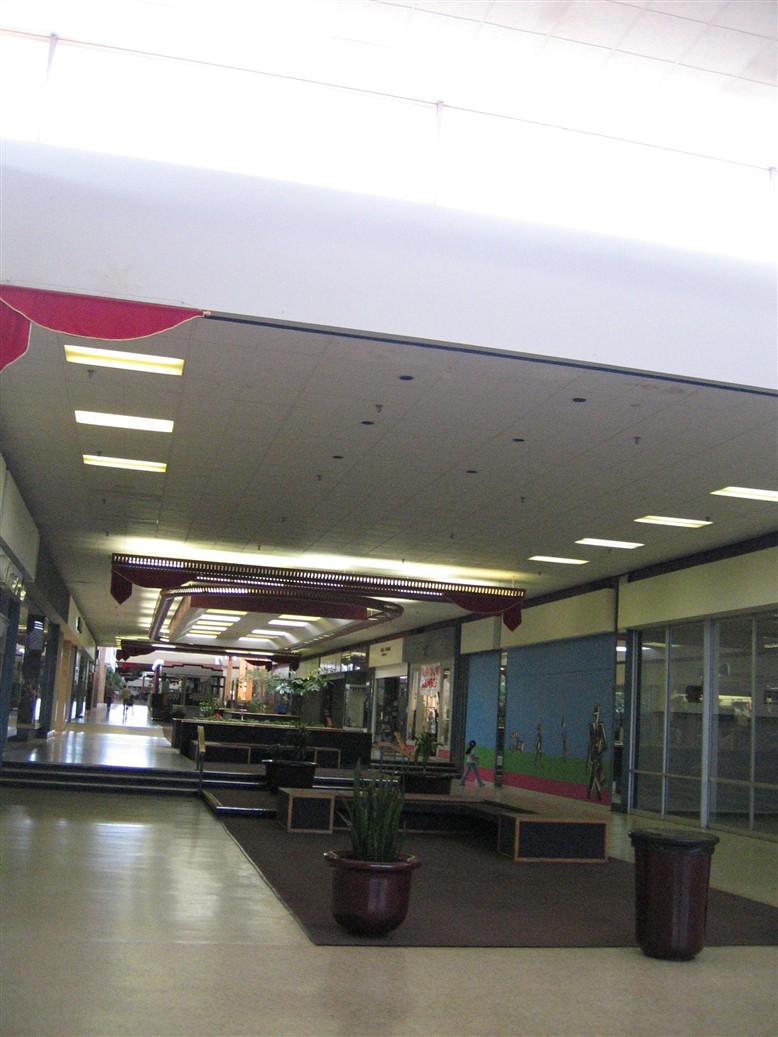 In 2006, the Kansas City government got tired of Indian Springs and decided it was time to assign it a blighted status, much to the chagrin of the mall’s owners and remaining tenants. As the city sought a developer to tear down the property and replace it with The Next Big Thing, mall owners have sued the city to challenge the blighted status. Also, as of January 2007 the Kansas City Schools are mulling over where they will move once the mall is torn down.
In 2006, the Kansas City government got tired of Indian Springs and decided it was time to assign it a blighted status, much to the chagrin of the mall’s owners and remaining tenants. As the city sought a developer to tear down the property and replace it with The Next Big Thing, mall owners have sued the city to challenge the blighted status. Also, as of January 2007 the Kansas City Schools are mulling over where they will move once the mall is torn down.
So why did Indian Springs fail? I suspect a combination of over-malling in the Kansas City area in general, the erosion of the local economy of KCKS, and competition from dominant super-regionals such as Oak Park Mall several miles south in Overland Park killed the chances for Indian Springs’ success. As redevelopment and razing of the structure seems inevitable, we are reminded of how fast many enclosed centers like this one are disappearing. Better catch it while you can. The pictures here were taken in April 2006, but also check out the mall’s aerial photos on Microsoft Virtual Earth.
